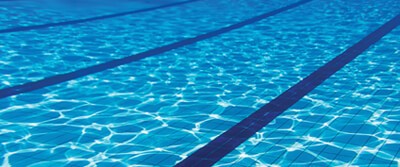Stop Peeing in the Pool (Scientists Can Tell)

By Celeste Beley
You may have heard that many swimming pools now have a chemical that will change colors if you urinate in the pool, similar to a pH test kit or pH paper strips. It’s a myth, but that doesn’t mean that scientists can’t tell — it may just take a little more time, and a lot more science.
Another myth is that chlorine and other chemicals added to pools will kill any bacteria from urine. While chlorine does kill germs, urine from healthy people is actually sterile. However, the urine reacts with chlorine to create many new chemicals, some of which are irritants.
Scientists at the University of Alberta specifically looked at one chlorine byproduct called trychloramine to see if they could tell how much urine was really in pool water. Most people think that the “swimming pool smell” is from chlorine, but the smell is actually from trychloramine. The stronger the smell, the more irritants are present.
Since urine is sterile, scientists needed a marker to signal its presence. They chose acesulfame potassium (also called Ace-K), an artificial sweetener used in food and beverages. Ace-K does not break down in pool water or at normal temperatures and is not digested in the human body, which made it a good choice.
The researchers estimated the average amount of Ace-K in a typical urine excretion by collecting and mixing 20 samples. They found that each milliliter of urine contained approximately 2.36 micrograms of Ace-K. Then they collected water samples from a city water supply and from two separate swimming pools in Canada — one that held approximately 110,000 gallons of water and the other with about 220,000 gallons.
Samples from the city water supply contained between 12 and 20 nanograms of Ace-K. If there was no urine in the swimming pools, their Ace-K levels would have been similar. Instead, they found over 156 nanograms of Ace-K per liter in the smaller pool and 210 nanograms per liter in the larger pool — the equivalent of eight and 20 gallons of urine per pool, respectively.
The same researchers tested an additional 21 public pools, eight hot tubs and one private pool and found that those locations also contained urine, so the results are typical.
In spite of these rather unpleasant findings, researchers hope that the results will trigger prevention, not cleanup. The results may help to determine when or if the pool water needs to be changed or diluted, but it also tells us what you already know: Don’t pee in the pool!
You may also like: 3 Things You Should Know About Sunscreen
Discussion Questions
- Research the other types of markers that researchers could use. Would any other markers work for this type of research? Why or why not?
- If you knew how much urine was in a swimming pool, would you change your mind about swimming there? How much urine would keep you out of the pool? Discuss other health issues that could arise from exposure to chlorine byproducts.
- Concentration
- Sterile
- Marker